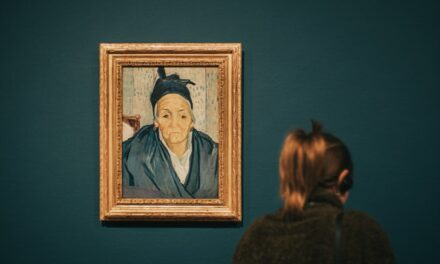Willem van de Velde the Younger was born in 1633 in Amsterdam, a city that was then at the height of its Golden Age. He was the son of Willem van de Velde the Elder, a prominent marine painter whose influence would shape the younger artist’s career. Growing up in a household steeped in artistic tradition, Willem was exposed to the world of art from an early age.
His father’s studio was a vibrant space filled with canvases, brushes, and the scent of oil paint, which undoubtedly ignited his passion for painting. The bustling port city of Amsterdam, with its rich maritime culture and thriving trade, provided a constant source of inspiration for young Willem, who would later become renowned for his depictions of ships and seascapes. The socio-political climate of the Netherlands during Willem’s formative years also played a significant role in shaping his artistic vision.
The Dutch Republic was engaged in a series of naval conflicts, particularly with England and France, which heightened the public’s interest in maritime themes. This environment not only fostered a sense of national pride but also created a demand for artworks that celebrated naval prowess and the beauty of the sea. As a result, Willem van de Velde the Younger found himself at the intersection of personal ambition and cultural significance, setting the stage for a career that would leave an indelible mark on maritime art.
Summary
- Willem van de Velde the Younger was born into a family of artists and grew up surrounded by the world of maritime art, which greatly influenced his work.
- He received training from his father, Willem van de Velde the Elder, and honed his skills in capturing the sea and ships in his paintings.
- van de Velde’s work often depicted naval battles, seascapes, and maritime scenes, reflecting his fascination with the sea and naval history.
- His paintings were characterised by meticulous attention to detail, use of light and shadow, and a sense of movement in the water and ships.
- Notable works by van de Velde can be found in prestigious collections such as the National Maritime Museum in London, showcasing his enduring legacy in maritime art.
Artistic Influences and Training
The Foundational Influence of His Father
The Elder’s meticulous attention to detail and ability to capture the dynamic interplay between light and water served as a foundation for the Younger’s own style. Willem would have spent countless hours observing his father at work, absorbing techniques and understanding the nuances of marine subjects.
A Broader Artistic Context
This familial bond not only provided him with technical skills but also instilled in him a deep appreciation for the maritime world that would become his lifelong focus. In addition to his father’s influence, Willem was likely exposed to the works of other contemporary artists who were exploring similar themes. The Dutch Golden Age was marked by a flourishing of artistic talent, with painters such as Aelbert Cuyp and Jacob van Ruisdael making significant contributions to landscape and seascape painting.
Developing a Unique Approach
The interplay of light, atmosphere, and natural elements in their works may have inspired Willem to develop his own unique approach to capturing the essence of the sea. Furthermore, the burgeoning art market in Amsterdam allowed him to engage with various artistic styles and techniques, broadening his understanding and ultimately enriching his own artistic practice.
Subject Matter and Themes in van de Velde’s Work
Willem van de Velde the Younger is best known for his captivating depictions of maritime scenes, which often feature ships navigating through turbulent waters or serene harbours. His works reflect not only the beauty of the sea but also the intricate relationship between humanity and nature. The subject matter of his paintings frequently includes naval battles, merchant vessels, and fishing boats, all set against dramatic skies that evoke a sense of movement and emotion.
This focus on maritime themes resonated deeply with audiences of his time, who were captivated by the exploits of their naval forces and the burgeoning trade routes that defined their economy. Moreover, van de Velde’s work often embodies themes of adventure and exploration, reflecting the spirit of discovery that characterised the Dutch Golden Age. His paintings serve as visual narratives that transport viewers to distant shores and bustling ports, inviting them to partake in the excitement of maritime life.
The artist’s ability to convey both the grandeur and peril of the sea speaks to a broader human experience—one that encompasses ambition, risk, and the relentless pursuit of knowledge. Through his art, van de Velde not only documented historical events but also captured the essence of an era defined by its maritime prowess.
Techniques and Style of van de Velde’s Paintings
Willem van de Velde the Younger’s technique is characterised by a remarkable attention to detail and a masterful use of light and shadow. His ability to render the textures of water, sails, and sky is particularly noteworthy; he employed a variety of brushstrokes to create dynamic surfaces that evoke movement and depth. The interplay between light and water is a hallmark of his style, as he often depicted sunlight glinting off waves or clouds casting shadows over ships.
This meticulous approach not only enhances the realism of his work but also imbues it with a sense of atmosphere that draws viewers into the scene. In terms of composition, van de Velde often employed a balanced arrangement that guides the viewer’s eye through the painting. His use of diagonal lines—such as those created by masts or waves—adds a sense of dynamism to his works, while carefully placed focal points ensure that each element contributes to the overall narrative.
The artist’s palette is typically rich yet restrained, favouring earthy tones alongside vibrant blues and whites that reflect the natural colours found in maritime environments. This combination of technical skill and aesthetic sensibility has solidified van de Velde’s reputation as one of the foremost marine painters of his time.
Notable Works and Collections
Among Willem van de Velde the Younger’s most notable works is “The Battle of Texel,” which vividly captures a naval engagement between Dutch and English ships during the Second Anglo-Dutch War. This painting exemplifies his ability to convey action and drama while maintaining an impressive level of detail.
Such works not only serve as historical records but also highlight van de Velde’s skill in portraying complex narratives through visual art. Many of van de Velde’s paintings are housed in prestigious collections around the world, including institutions such as the National Gallery in London and the Rijksmuseum in Amsterdam. These collections provide insight into his artistic evolution and thematic preoccupations over time.
Additionally, private collectors have sought out his works for their historical significance and aesthetic appeal, further cementing his status as a master marine painter. The enduring popularity of van de Velde’s paintings speaks to their timeless quality and relevance within both art history and contemporary appreciation.
Recognition and Success in van de Velde’s Career
Willem van de Velde the Younger achieved considerable recognition during his lifetime, establishing himself as one of the leading marine painters in Europe. His works were highly sought after by collectors and patrons alike, including members of royalty who appreciated his ability to capture both beauty and historical significance within his paintings. The artist’s success can be attributed not only to his technical prowess but also to his keen understanding of market demands; he adeptly navigated the art world by producing works that resonated with contemporary audiences.
As a testament to his success, van de Velde was appointed court painter to Charles II of England after he fled to Amsterdam during the English Civil War. This position not only elevated his status but also provided him with opportunities to create works that celebrated England’s naval power. His connection to royalty further solidified his reputation as an artist of distinction, allowing him to thrive in an environment where art was both a reflection of personal expression and a means of political commentary.
Collaboration with Other Artists and Family Members
Collaboration played an essential role in Willem van de Velde the Younger’s artistic journey, particularly through his relationship with family members. His father, Willem van de Velde the Elder, was not only an influence on his style but also a collaborator on various projects throughout their careers. The two artists often worked side by side in their studio, sharing techniques and ideas that enriched their respective practices.
This familial bond fostered an environment where creativity flourished, allowing them to push each other towards greater artistic achievements. In addition to familial collaboration, van de Velde also interacted with other artists within Amsterdam’s vibrant art community. He was part of a network that included prominent figures such as Aelbert Cuyp and Jan van Goyen, whose works may have inspired him or provided opportunities for artistic exchange.
These interactions allowed him to refine his style while contributing to a broader dialogue about marine painting during this period. The collaborative spirit within this artistic milieu undoubtedly influenced van de Velde’s development as an artist.
Travels and Inspirations for van de Velde’s Seascapes
Willem van de Velde the Younger’s travels significantly informed his artistic practice, providing him with firsthand experiences that enriched his understanding of maritime life. His journeys along the Dutch coast and beyond allowed him to observe various types of vessels in different settings—ranging from bustling harbours to open seas—each offering unique challenges and inspirations for his work. These experiences translated into a profound knowledge of ship design and navigation, which he meticulously incorporated into his paintings.
Moreover, van de Velde’s travels were not limited to local waters; he ventured further afield during his time in England after Charles II’s restoration in 1660. This period exposed him to new maritime landscapes and cultural influences that would further diversify his artistic repertoire. The coastal scenery he encountered during these travels became integral to his seascapes, allowing him to capture not only ships but also atmospheric conditions that defined each location.
This blend of personal experience and observation contributed significantly to the authenticity and depth found within his body of work.
Legacy and Impact of van de Velde’s Work on Maritime Art
Willem van de Velde the Younger’s legacy is firmly entrenched within the canon of maritime art; he is often regarded as one of its most significant practitioners. His innovative approach to depicting seascapes set new standards for realism in marine painting, influencing generations of artists who followed in his wake. The clarity with which he rendered water dynamics and atmospheric effects became benchmarks for aspiring marine painters seeking to emulate his success.
Furthermore, van de Velde’s work has had lasting implications for how maritime history is represented in art. By capturing naval battles alongside everyday scenes from maritime life, he provided a comprehensive view that encompassed both grandeur and intimacy within this genre. His ability to blend historical narrative with aesthetic beauty has inspired countless artists across various mediums—ensuring that his impact on maritime art continues to resonate even today.
Controversies and Criticisms of van de Velde’s Art
Despite Willem van de Velde the Younger’s acclaim, some criticisms have emerged regarding certain aspects of his work. Some art historians argue that while he excelled at capturing detail and atmosphere, there are moments when emotional depth appears lacking compared to contemporaries who infused their works with more dramatic narratives or personal expression. This critique suggests that while van de Velde’s technical prowess is undeniable, it may come at the expense of conveying deeper emotional resonance.
Additionally, there have been discussions surrounding authenticity within some attributed works; as with many artists from this period, questions arise regarding collaborations or pieces produced under different circumstances than originally believed. Such controversies highlight broader issues within art history concerning attribution practices—an ongoing dialogue that continues to shape our understanding of artists like van de Velde.
Appreciation and Collecting van de Velde’s Paintings in the Modern Era
In contemporary times, Willem van de Velde the Younger’s paintings are highly prized by collectors and institutions alike for their historical significance and aesthetic appeal. Art enthusiasts appreciate not only their beauty but also their role in documenting an era defined by maritime exploration and trade. Auctions featuring his works often attract significant attention from collectors eager to acquire pieces that embody both artistic mastery and cultural heritage.
These exhibitions provide opportunities for audiences to engage with his work on multiple levels—exploring themes related to history, culture, and artistry while celebrating an artist whose legacy continues to inspire admiration across generations. As interest in maritime art grows within contemporary discourse, Willem van de Velde the Younger remains an enduring figure whose influence transcends time.
If you are interested in exploring different approaches to art, you may also enjoy reading this article on balancing photo reference and life drawing techniques. It delves into the benefits of each method and how they can be combined to create dynamic and engaging artwork. This article provides valuable insights for artists looking to expand their skills and experiment with new techniques.



